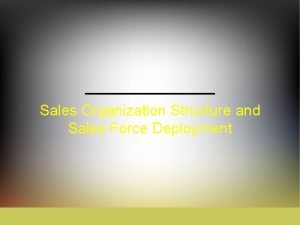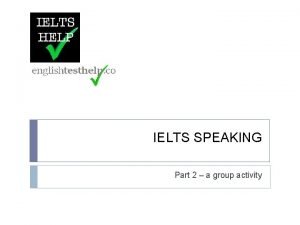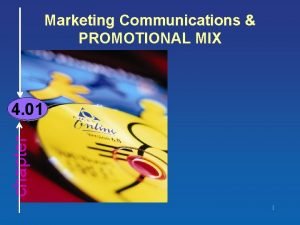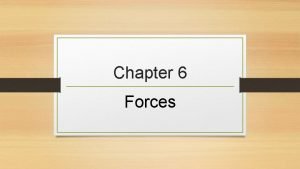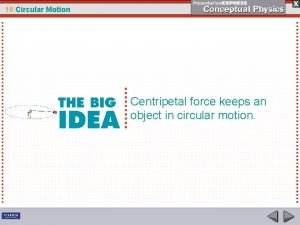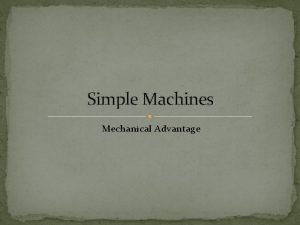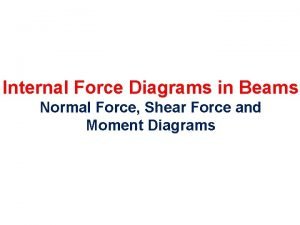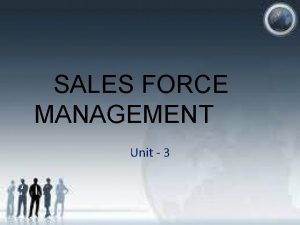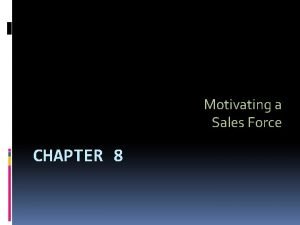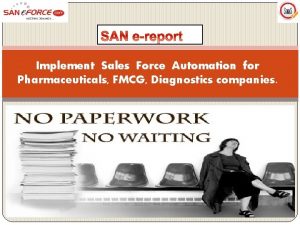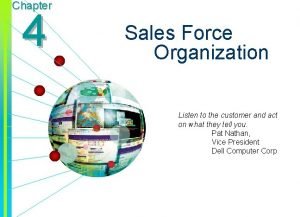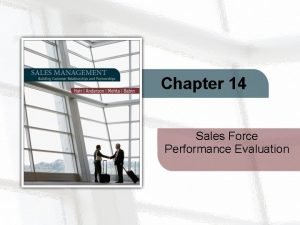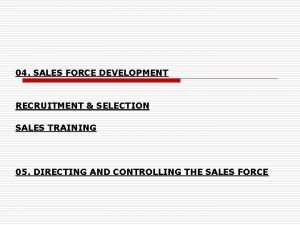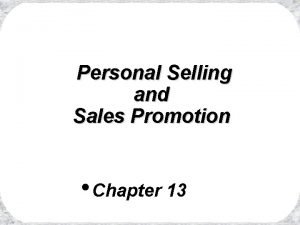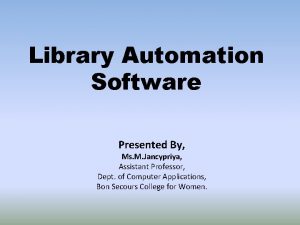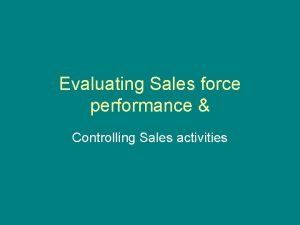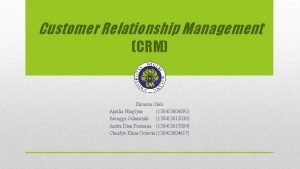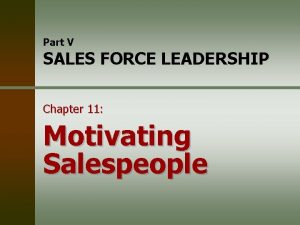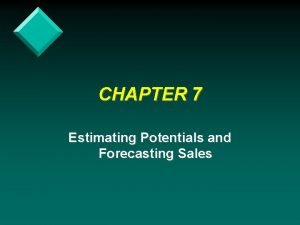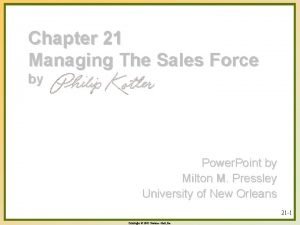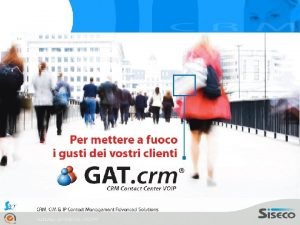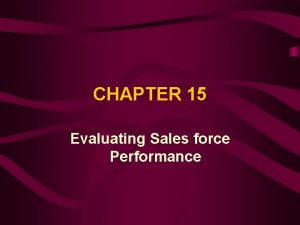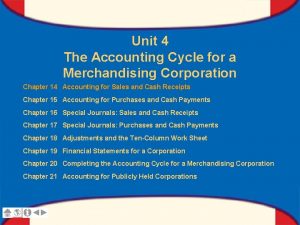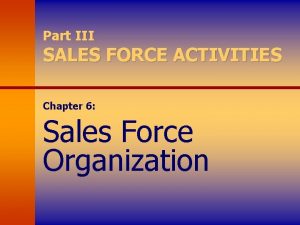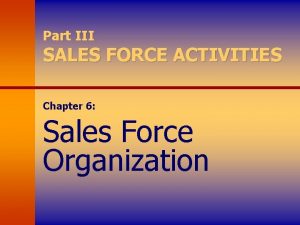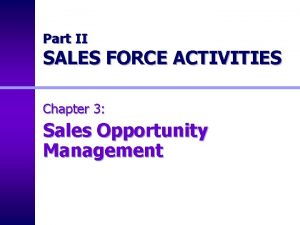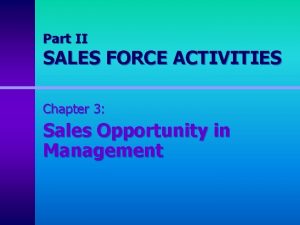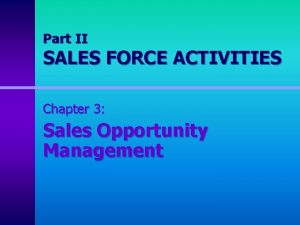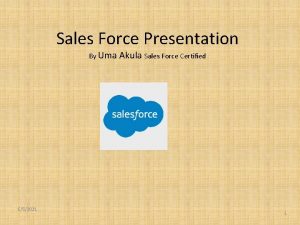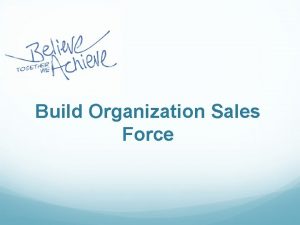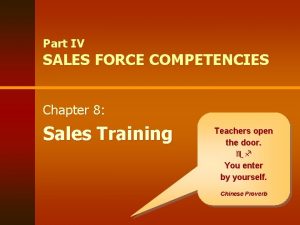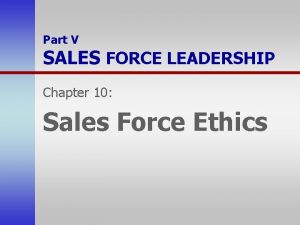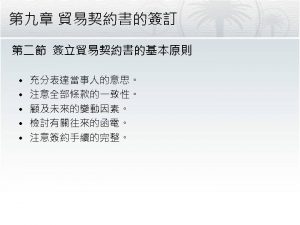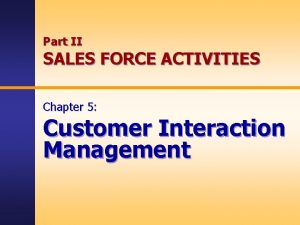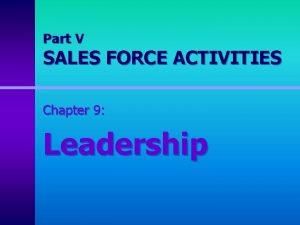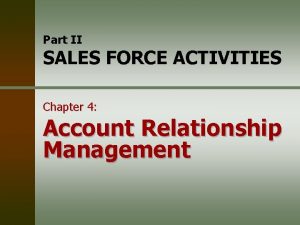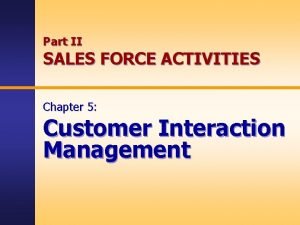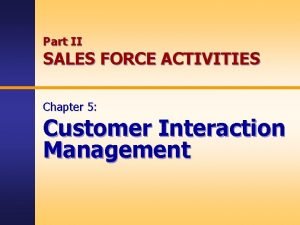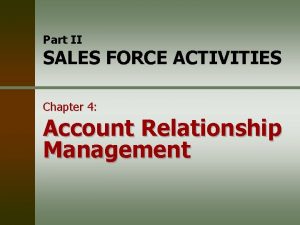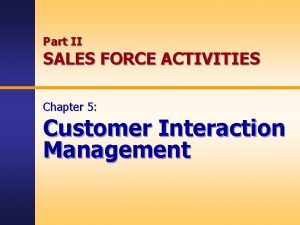Part III SALES FORCE ACTIVITIES Chapter 6 Sales















































- Slides: 47

Part III SALES FORCE ACTIVITIES Chapter 6: Sales Force Organization

Sales Force Organization: Impact Structure Sales Management Role Compensation Recruiting/ Selection Training Program Performance Evaluation Figure 6 -1: Decisions Affected by Sales Force Organization

Sales Force Organization: Topics Sales Force Generalists Sales Force Specializatio n Strategic Account Management Telemarketi ng Emerging Issues

Generalist Versus Specialist structures § Sales force organizational structures vary from generalist structures, where each salesperson sells all products to all customers within a particular geographic area, to highly specialized sales force , where teams of salespeople focus on specific products, markets or Functions.

Generalist Versus Specialist structures § Companies attempt to develop a sale force organization that is adaptable , efficient and effective. § A sales organization is adaptive if the company can react quickly to product and market changes. § Efficiency reflects the rate at which the key sales activities such as calls and proposals are performed.

Generalist Versus Specialist structures § Effectiveness represents the buyer’s favorable reaction to the sales effort. § Four fundamental structures for organizing a sales force are generalists , product specialized , customer specialized , and functional specialized.

Generalist structure § The most common and least complicated sales force organization is a generalist structure. § Also referred to as a geographic organization , in which each salesperson sells the firm’s entire product line to all accounts and prospects , usually within a specific geographic area.

Generalist structure § Generalist salespeople have small territories and minimal travel time and spend a high percentage of their time face to face with customers. § A generalist organization works best when the product line consists of related products and services that appeal to homogenous group of buyers.

Generalist structure § Serious shortcomings may arise like : • When salespeople sell many products, they tend to focus their attention on lines with which they are comfortable, neglecting the other lines that are newer and more profitable • There is a risk that the salespeople will spend too much time with customers who are easy to sell but not necessary profitable.

Generalist structure § Salespeople may find themselves at a competitive disadvantage if they are asked to sell to customers with problems and needs that are different and complex.

Product specialization § A product based specialization is most appropriate when a firm has a large , diverse and complex line of products. This may develop as a result of new products , mergers or acquisitions. § Each salesperson specializes by selling only a few of products in the organization’s total product portfolio and reports to a management structure that is also focused on the product lines.

Product specialization The product specialization is most effective way to ensure that a product or product line receives the desired level of selling effort § Product specialization has a number of limitations: 1. It has low geographic efficiency, meaning that each product specialists should cover a large geographic area. §

Product specialization 2. Increases in the overall travel expenses 3. Reduces the amount of face to face time with customers, it may also create confusion on the part of the customers.

Product Specialist Organization: Analysis § Advantages - Allows focusing of sales effort - Expertise developed in limited number of products § Disadvantages - More expensive to operate - May result in confusion , more travel expenses and reduces the amount of face to face time with the customers.

Customer specialization 2. Customer based sales organizations are very adaptive as well to changes in customer needs and buying behavior. 3. An additional benefit is that the sales force can be organized so that each customer or market receives the appropriate level of setting resources.

Customer specialization In a customer specialization type , sales force organization , also referred to as Vertical marketing , each salesperson or sales team sells the entire product line to select types of buyers. § The most important advantage of customer specialization is that: 1. It allows the salespeople to gain a better understanding of the customer’s special needs and problems and become experts in a particular industry. §

Customer specialization A customer sales organization has downsides: 1. It can lead to conflict with the marketing organization, which is usually organized around products 2. The difficulty in finding a product experts( lacking of experts) 3. Very expensive §

Customer Specialist Organization: Analysis § Advantages - Consistent with market driven strategy - Salespeople become customer experts - Customer segments receive appropriate resources § Disadvantages - May conflict with marketing organization - Product expertise may be lacking - More expensive

Functional Specialization § A fourth type of specialization in sales organizations , functional specialization focuses on the activities or functions performed by customer contact people.

Functional Specialists: Alternatives Companies New Customers § American Express § Gillette Retention § Browning-Ferris Industries End-Users § Lexmark International Sales Engineers § § Service Consultants § § 3 M AT&T IBM Mc. Kesson Corporation

Strategic account management program § Is more a selling strategy , it is a marketing philosophy directed at a select group of customers that account for a disproportionately large share of the seller’s total revenue. * For example the strategic account student is who gives the most benefits such as ( creative , supportive , intelligent…)

Strategic Accounts selection: What is Different about Strategic Accounts? Previous Approach New Strategic Account Business Plan § 3 – 6 months Duration § 2 – 3 years Structure of § Tactical Business Plan promotional program § Strategic business plan focused on growth and profitability Personnel § Sales reps and Involvement purchasing agents Figure 6 -7 : Changes in Joint Account Planning § Senior management from both companies

Strategic Accounts selection: Who are Strategic Accounts? § When a customer purchases a significant volume and exhibits one or a combination of the following characteristics: - Multiple people are involved in the buying process - Purchasing is centralized - The customer desires a long-term, cooperative working relationship - The customer expects specialized attention and service - Align strategic intent.

Strategic Accounts selection: Common Problems with Account Selection § Too many “strategic accounts” § “We see them as strategic, but they don’t even see us on their radar. ” § Too much organizational effort directed towards big name accounts § Not thinking enough about return on relationship investment § No common process across the organization § No tracking and reviewing of strategic account selection

How to organize? § Companies have taken a variety of approaches to organizing their strategic accounts programs. What works for one company and is appropriate for the situation may not work in another , the major organizational alternatives are as follows:

How to Organize? Alternative Organization Models § Existing Sales Force - Low risk; little change; less expensive than setting up a new or separate sales force. § Management Sell National Accounts - Keeps management close to customer § Separate Sales Force - More aggressive; more expensive; alternative to sales management for promotion for sales staff § Sales Teams - Use when selling process is complex

How to Organize ? Alternative Organization Model Effectiveness Existing Sales Force § Least effective § Lowest market performance Sales Management § Somewhat more effective § Slightly better market performance Separate Sales Force § Fairly effective § Good Market Performance Cross-Functional § Most effective Sales Teams § Best Market Performance Table 6 -1: Doing the Math on Account Management

Strategic Accounts Programs: Benefits Increased sale to national accounts 91% Increased profits from national accounts 83% Increased market share 74% Improved customer communications 74% Improved customer coordination 30%

Strategic Account Programs: Survey Results Are training programs for the strategic account manager different? Different training for strategic account managers 37% 26% 37% No difference in training for strategic account managers or other sales staff Provide no training for strategic account managers

Telemarketing § Refers to customer contacts utilizing telecommunication technology for personal selling without direct face to face contact.

Sales Force Organization: Telemarketing Advantages and Challenges Advantages § Low cost per sales call § Profitably serve small to medium customers § Speed/time saving of telephone ordering

Sales Force Organization: Cost Analysis Field Rep Telemarketing Sales calls per day 5 25 Sales calls per quarter 325 1624 Sales calls per year 1300 6500 Salespeople required 6. 5 1. 2 Cost per sales call $250 $15 Cost per year $1, 998, 750 $117, 000

Sales Force Organization: Scope of Telemarketing Activity Description Customer Service § Companies provide customers with a number they can call if they have questions. Prospecting and Lead Qualification § Firms are taking a proactive approach to prospecting by having telemarketers call prospects or qualify them for face-to-face selling. Account Management § Selling secondary product lines or service small customers by phone, thereby freeing their salespeople to concentrate on larger customers and strategic product lines. Promotion Support § Develop newspaper and magazine ads that feature either a local or an 800 number to get additional product information or place an order. Figure 6 -8: The Scope of Telemarketing Activities

Sales Force Organization: Telemarketing Advantages and Challenges § Acceptance by field salespeople § Management § Role of the Internet *( Permission marketing ) which means customer asks for information before it is provided.

Independent sales agent § Sometimes referred to as manufacturer’s reps. To perform the selling function. Sales agents are not employees , but independent businesses given exclusive contracts to perform the selling function within specified geographic areas

When to use sales agents? 1. Economic consequences: Suppose that independent sales agents Receives a 5% commission on sales And that administrative cost $50, 000. Company sales personnel receive a 3% Commission plus a salary, total Adm. Costs are estimated at $550, 000. at What sales level would the cost of the Company sales force equal that of sales Agents ?

Sales Force Organization: Economic Analysis of Sales Agents Independent Agents Total Selling Costs Own Sales Force Break-Even Sales Volume Figure 6 -9: Total Costs of Independent Agents vs. Own Sales Force

When to use sales agents? 2. Level of Control: costs are not the only consideration , managers can control a company sales force through the selection , training , and supervision of salespeople; establishment of operating policies and procedures and various evaluation and reward programs.

Sales Force Organization: 3. Market Conditions Favoring Sales Agents § The market is fragmented and customers are difficult to find or understand. § The products are easily understood commodities that have been around for a long time. § Buying is decentralized. § Local knowledge and local distribution is important. § The selling cycle is short and orders are typically small. § The company is selling only a few products. § It is not necessary to tightly control the selling effort. § There is a good potential sales agency who has significant marketing expertise in the industry. § Ongoing support activities are not important and the company does not need customer information. § The company is not well known and has little equity in the market. Figure 6 -10: Market Factors Favoring the Use of Sales Agents

Sales Force Organization: Selecting a Sales Agency 1. Define the ideal market focus. 2. Identify compatible principles. 3. Specify the necessary technical background. LOCATING AGENTS: Rep. Directories Customer References Compatible Manufactures References from Current Agents Trade Shows

Emerging sales force organization issues § Five issues related to sales force organization are getting increasing management attention: § Centralization versus decentralization § Cross functional coordination § Global account organizations § Sales team § Selling partners

Centralization versus decentralization § Decentralized organization , field sales managers have the resources and responsibility for performing recruiting , selecting , training, compensating , motivating and evaluating salespeople. In a highly centralized operation , central headquarters control these activities

Cross functional coordination § With which functional areas is the sales force most likely to interact? Depending on the organization and the situation , sales will need to work with the following departments to address customer needs § Engineering § Marketing § Production § Accounting and finance § Operations/customer services

Global account organizations § Customer expansion to global operations and into new product lines and business requires suppliers to have global capabilities and real-time knowledge and responsiveness across businesses and functions. § Firms are developing global account organizations, which are responsible for managing their company’s sales efforts to account with locations in multiple countries.

Sales teams § Today’s customers have customized and complex needs- needs that can’t be met by individual salespeople. § Sales team consisting salespeople, customer services , technical specialists and other functional areas. § The objective of these teams is to consolidate knowledge and skills to focus on a more creative and complete solution to a customer’s needs in order to build stronger customer relationships.

Selling partners § Companies are finding it necessary to market through selling partners. § These are salespeople who are not on the payroll and who not only sell but also provide technical and operating support.

Sales Force Organization: Evaluating Organizational Structure § Financial performance -- must consider BOTH costs and revenues § Adaptability External Internal - New competitors - Changing technology - Modification to channel systems - Industry life cycle - Company goals Management philosophy Production capabilities Technical resources § Integration -- subunits of sales organization must work in harmony
 Ales force structure
Ales force structure Salesforce sales organization structure
Salesforce sales organization structure Hamlet act iii scene iii
Hamlet act iii scene iii Va handbook 5017 part iii appendix a
Va handbook 5017 part iii appendix a Operating activities vs investing activities
Operating activities vs investing activities Indoor sports and outdoor sports
Indoor sports and outdoor sports Support activities and primary activities
Support activities and primary activities Primary activities and tertiary activities
Primary activities and tertiary activities Ielts speaking topics with answers
Ielts speaking topics with answers Promotional mix marketing
Promotional mix marketing Contact vs field forces
Contact vs field forces Vt=2pir/t
Vt=2pir/t Long range force
Long range force If you whirl a tin can on the end of a string
If you whirl a tin can on the end of a string The ratio of resistance force to effort force
The ratio of resistance force to effort force What is net force
What is net force Difference between centrifugal and centripetal force
Difference between centrifugal and centripetal force Whats a noncontact force
Whats a noncontact force Why electric force is conservative
Why electric force is conservative Centripetal force and gravitational force
Centripetal force and gravitational force Normal force and gravitational force
Normal force and gravitational force Shear force diagram
Shear force diagram Part part whole addition
Part part whole addition Unit ratio definition
Unit ratio definition Part part whole
Part part whole Technical description
Technical description Parts of cocktail bar
Parts of cocktail bar The part of a shadow surrounding the darkest part
The part of a shadow surrounding the darkest part Minitab adalah
Minitab adalah Force management definition
Force management definition Sales force automation (sfa)
Sales force automation (sfa) Sales force motivation ppt
Sales force motivation ppt Sanesfa.info
Sanesfa.info Staff sales organization
Staff sales organization Sales force evaluation process
Sales force evaluation process Sales quota ppt
Sales quota ppt Recruitment and selection of sales force
Recruitment and selection of sales force Sales promotion
Sales promotion Sales force automation
Sales force automation Controlling the sales force is an activity of
Controlling the sales force is an activity of Contoh aplikasi sales force automation
Contoh aplikasi sales force automation Methods of sales force motivation
Methods of sales force motivation Sales potential vs sales forecast
Sales potential vs sales forecast Sales force effectiveness ppt
Sales force effectiveness ppt Sales force mobility
Sales force mobility Sfa sales force automation
Sfa sales force automation Evaluating sales force performance
Evaluating sales force performance Glencoe accounting chapter 14 answer key
Glencoe accounting chapter 14 answer key

